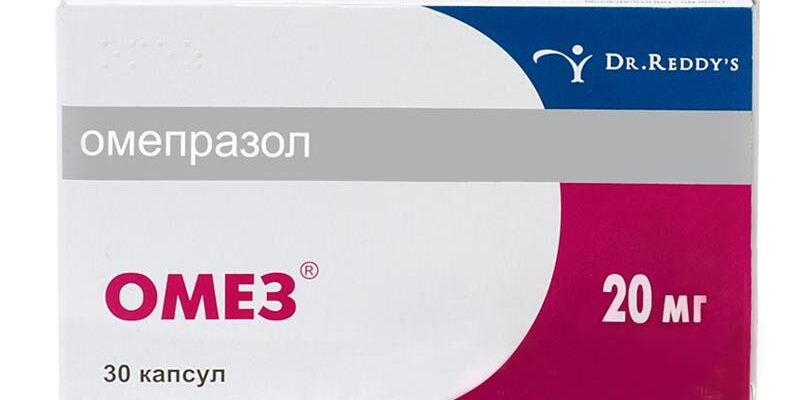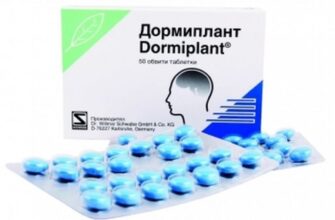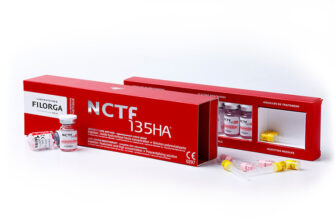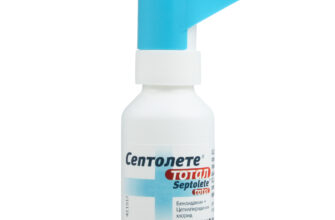Review of the best according to the editorial board. On the selection criteria. This material is subjective and does not constitute advertising and does not serve as a purchase guide. Before buying, you need to consult with a specialist.
After reading this article, a person without medical education can not only understand what Helicobacter pylori infection is, but most importantly – why it needs to be treated, and how it needs to be treated in accordance with modern concepts. Therefore, if a doctor simply suggests that you 'drink an antibiotic' to get rid of H. pylori, then after reading this article, you will, of course, run away from such a doctor as from the plague, and look for a real specialist. Treatment of Helicobacter pylori infection is not an easy task, but first things first.
At first it seemed incredible that in the acidic environment of the stomach, which is capable of dissolving even iron filings, any microorganism could live and multiply. Then it became a proven fact. It is a delicate microorganism wrapped in a spiral – Helicobacter pylori. At first, they were considered an accidental find, then – harmless saprophytes. But then these microbes became increasingly common in patients with abdominal pain, belching, heartburn, and other symptoms of upper, or gastric dyspepsia.
But the importance of this causative agent of infection increased significantly when a close relationship was established between the presence of Helicobacter and the development of gastric ulcer and malignant neoplasms of this organ in carriers of Helicobacter. Specialists-oncologists consider the presence of Helicobacter pylori infection to be a pronounced level 1 carcinogen.
It is important that it is very easy to detect the presence of this infection at the present time. There is a special urease breath test. This is a very effective and non-invasive method, it only needs to 'breathe into a tube'. Anyone can do this test and find out if a person is at risk.
But, unfortunately, 'our people' do not attach importance to prevention, and often end up on the operating table with complications – for example, a stomach ulcer. Therefore, in the event that a person is over 50-55 years old, if he already has symptoms of dyspeptic disorders, and the doctor has a 'alertness to oncology' (for example, there is a loss of body weight, appetite, symptoms of iron deficiency anemia), then you need to perform gastroendoscopy with biopsy.
It has been proved that the presence of a long-term Helicobacter pylori infection can cause not only gastric and duodenal ulcers, but also stomach cancer. Helicobacter pylori infection can cause iron deficiency anemia, a drop in platelets in the blood plasma, and cause chronic vitamin B12 deficiency, which is manifested by neurological disorders.
Therefore, the treatment of Helicobacter pylori infection is important, although not simple. The very procedure for destroying this microorganism is called eradication, which is Latin for 'eradication'. This is not a random term. Just like that, by prescribing any one medicine, 'at random' to destroy the H. pylori infection, for which the harsh conditions of gastric juice are the norm, is impossible. There are many eradication schemes that are all recognized, 'work', and are used when indicated. But before moving on to drugs, it is necessary to accurately determine the indications for treatment.
- Who is the treatment indicated for?
- Review of drugs for the treatment of H. pylori infection (H. pylori)
- Essential drugs for eradication
- PPI – proton pump inhibitors
- Omeprazole (Gastrozole, Omez, Ortanol, Ultop)
- Pantoprazole (Nolpaza)
- Lansoprazole (Helikol, Ranzap, Lanzoptol, Lancid, Epicur)
- Rabeprazole (Bereta, Pariet, Zulbeks, Rabelok, Razo, Ulcernil, Khairabezol)
- Esomeprazole (Nexium, Emanera)
- Antibacterial agents
- Clarithromycin (Klacid, Klabaks, Klabakt, Ecositrin)
- Amoxicillin
- Tetracycline
- Metronidazole
- Levofloxacin (Glevo, Remedia, Tavanic)
- Combined medicines: three in one
- Pilobact
- Bismuth preparations
- De-nol
- How to treat Helicobacter correctly?
- How to strengthen the treatment regimen?
Who is the treatment indicated for?
In the modern world, countries with a high level of medicine, there is a preventive focus of treatment. This means that it is better to avoid any condition at all than to treat the disease that develops later, spending a lot of money. Therefore, in the event that a person, who does not have any complaints, independently decides to be examined for Helicobacter pylori infection and it is confirmed, then it is possible to carry out prophylactic treatment in order to reduce the risk of developing serious diseases later.
If the patient already has any symptoms, then in this case, treatment is all the more indicated, and first of all, for conditions such as:
- the presence of severe symptoms of dyspepsia, such as heartburn, nausea, bloating and heaviness in the stomach after eating;
- dull, unlocalized, wandering pain or epigastric discomfort;
- nausea and bitterness in the mouth;
- the presence of a diagnosed gastric ulcer and or duodenal ulcer against the background of an identified Helicobacter pylori infection;
- a special lymphoma, or a tumor associated with the gastric mucosa, the so-called MALT – lymphoma;
- it is known that Helicobacter pylori infection increases the risk of developing erosive gastritis and peptic ulcer disease with prolonged use of non-steroidal anti-inflammatory drugs such as aspirin, and especially indomethacin and diclofenac. Therefore, in the event that a patient has proven the presence of Helicobacter pylori infection, and he is preparing to receive non-steroidal anti-inflammatory drugs for a long time, for example, if there is a diagnosis of rheumatoid arthritis, then he also needs preventive treatment;
- in the presence of proven intestinal metaplasia, or atrophy of the epithelium, identified with gastroduodenoscopy;
- if a patient – a carrier of Helicobacter pylori infection has close relatives – parents, or brothers and sisters who have been diagnosed with stomach cancer or have had cases of death from this disease in the family;
- in the presence of iron deficiency anemia of unknown etiology, with the exclusion of other causes, as well as with idiopathic thrombocytopenic purpura;
- another indication for the appointment of an eradication scheme is the diagnosis of Menetrie's disease, or hypertrophic gastritis. With this disease, the gastric mucosa increases, forms folds, cystic formations and various adenomas develop in it. It is known that Menetrie's disease is considered an optional (optional) precancerous condition.
Modern gastroenterology does not stand still, and the best eradication schemes are constantly being selected. After all, this microorganism, like all other microbes guilty of the development of certain diseases, is constantly being improved, and resistance, that is, the resistance of Helicobacter to antibiotics, is gradually increasing. Therefore, the basis of this article will be the so-called 'Maastricht Consensus V' of 2015.
According to this authoritative meeting of gastroenterologists, the results of which are accepted into action in many countries of the world, including the Russian Federation, and are recommended by the World Health Organization (WHO), timely treatment of H. pylori infection, or eradication:
- reduces the risk of developing malignant neoplasms of the stomach by almost 35%;
- already diagnosed precancerous diseases of the stomach stop progressing;
- if, according to gastroscopy, gastric atrophy was detected, then such atrophy disappears, and the gastric mucosa is restored;
Finally, timely eradication of Helicobacter pylori infection is economically beneficial for both the patient and the doctor, since its cost is extremely low compared to the cost of treating an advanced case of gastric ulcer or gastric cancer, which is caused by this infection.
Review of drugs for the treatment of H. pylori infection (H. pylori)
| Nomination | a place | Name of product | price |
| PPI – proton pump inhibitors | 1 | Omeprazole (Gastrozole, Omez, Ortanol, Ultop) | 163 r |
| 2 | Pantoprazole (Nolpaza) | 462 r | |
| 3 | Lansoprazole (Helikol, Ranzap, Lanzoptol, Lancid, Epicur) | 334 r | |
| 4 | Rabeprazole (Bereta, Pariet, Zulbeks, Rabelok, Razo, Ulcernil, Khairabezol) | RUB 2 125 | |
| 5 | Esomeprazole (Nexium, Emanera) | 235 RUB | |
| Antibacterial agents | 1 | Clarithromycin (Klacid, Klabaks, Klabakt, Ecositrin) | 629 RUB |
| 2 | Amoxicillin | 93 rbl. | |
| 3 | Tetracycline | RUB 29 | |
| 4 | Metronidazole | RUB 60 | |
| 5 | Levofloxacin (Glevo, Remedia, Tavanic) | 77 RUB | |
| Combined medicines: three in one | 1 | Pilobact | 1 216 rub. |
| Bismuth preparations | 1 | De-nol | 887 r |
| How to treat Helicobacter correctly | |||
| How to enhance the treatment regimen | |||
Essential drugs for eradication
First, we list the main groups of drugs that are used according to one scheme or another to eradicate Helicobacter pylori infection. After reading this review, the patient will roughly understand from what means the attending gastroenterologist will choose. All of the drugs listed below are drugs in tablets or capsules; injections, droppers, or any other form of parenteral administration are not used to treat H. pylori infection. Either regular tablets, film-coated tablets, or enteric capsules are sufficient.
All of these drugs are registered in the Russian Federation. First, the list contains the international non-proprietary name (INN), and then a list of synonyms for various drugs with the same active ingredient, which are produced by different companies. As a rule, the most expensive drug is the original one, that is, developed for the first time, the most reliable and uses the purest substance. As you know, being treated with the original medicine is always better for health, but it can be disadvantageous for the pocket. Of course, there are high-quality generics, which, although they are not produced by the company that released the original drug, are reliable manufacturers with a good reputation and good quality of medicinal substances.
The list also provides the minimum cost, as well as the range of prices. The cost of the drug that is prescribed for eradication is given with an indication of the required amount of medicine. The prices on the list are relevant for pharmacies of various forms of ownership in the Russian Federation for the fall of 2019.
Further, after the list of medicines, various schemes will be directly discussed, so you should not try to create yourself an eradication scheme from the medicines that are listed below, or use any one drug. This is a gross mistake and nothing more than self-medication.
PPI – proton pump inhibitors
Proton pump inhibitors reduce gastric acidity and treat symptoms such as heartburn. There are several generations of these drugs, and the further along the list the drugs of this group are located, the more modern and effective it is.
The history of proton pump inhibitors began with omeprazole, which was first created in Sweden in 1979 under the name 'Losik'. It began to be sold in 1988, since various clinical trials took place over the course of 9 years, and immediately created a furor. With the introduction of this drug, the era of drugs that have been proven to control the concentration of gastric acid has begun. The use of antisecretory drugs in the treatment of gastritis and peptic ulcer disease, described below, ultimately led to a decrease in the number of surgical interventions for ulcers, and made possible, with early diagnosis, conservative treatment of this serious disease. All of the following drugs are used in certain eradication schemes.
It should be noted that the drug of the latest generation of PPIs, registered in Russia (Dexilant), is not yet used in eradication therapy regimens. They are treated for erosive esophagitis and gastroesophageal reflux disease. Therefore, do not assume that the drug itself will be the best. Therefore, it is necessary to obey the instructions of the attending physician, and if you purchase one package of Dexilant for 'self-made' eradication, then you will simply be wasting 2000 rubles.
Omeprazole (Gastrozole, Omez, Ortanol, Ultop)
Popularity rating: 4.9
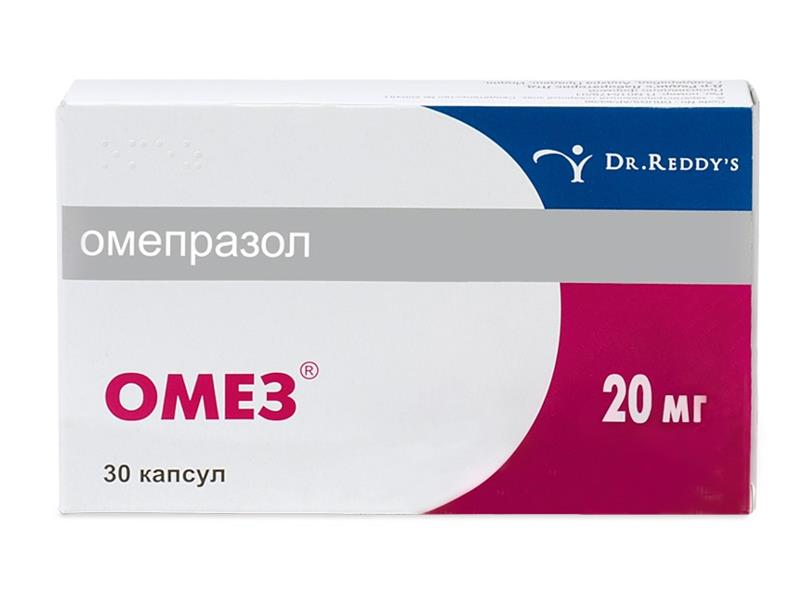
Omeprazole belongs to the first generation of proton pump inhibitors, and it has been successfully used in eradication therapy regimens, especially in their 'budget' version. Omeprazole is available in capsules of 20 mg, its effect is to reduce the activity of hydrogen-potassium ATPase, an enzyme involved in the synthesis of hydrochloric acid. As a result, the acidity of the gastric juice decreases.
Omeprazole acts rather quickly, and the maximum effect is observed after 2 hours. The effect of the drug gradually decreases, but even a day after taking a single dose of hydrochloric acid does not reach 50% of its normal concentration, that is, a reliable inhibition of half of the secretion occurs. Omeprazole is usually taken once a day, but in eradication regimens – twice a day, and the maximum effect due to the accumulation of the drug is observed somewhere in 4-5 days. The drug is completely transformed in the liver with the participation of the cytochrome system, and is excreted by the kidneys.
This drug is contraindicated in children, pregnant women and during breastfeeding, it is used with caution in hepatic and renal failure. The most common side effects are urticaria, sometimes diarrhea or constipation. Also, no more than 1% of cases may have abdominal pain, flatulence, episodes of nausea. All other side effects are very rare, such as joint pain, dry mouth, or a decrease in white blood cells in the peripheral blood.
It is necessary to use Omeprazole according to the scheme suggested by the gastroenterologist, but usually it is taken twice a day at a dose of 20 mg for one or two weeks, and always in combination with other drugs. Omeprazole alone, like any other proton pump inhibitor, even the most modern one, cannot cope with H. pylori infection. It is important that Omeprazole can be taken with food, this does not affect the quality of treatment.
The most famous drug from this group is Omez, which is produced by the Indian laboratory Dr. Reddis. The cost of one package of 30 capsules of omeprazole, 20 mg each, will cost from 130 to 167 rubles. It is an inexpensive drug.
Pantoprazole (Nolpaza)
Popularity rating: 4.8
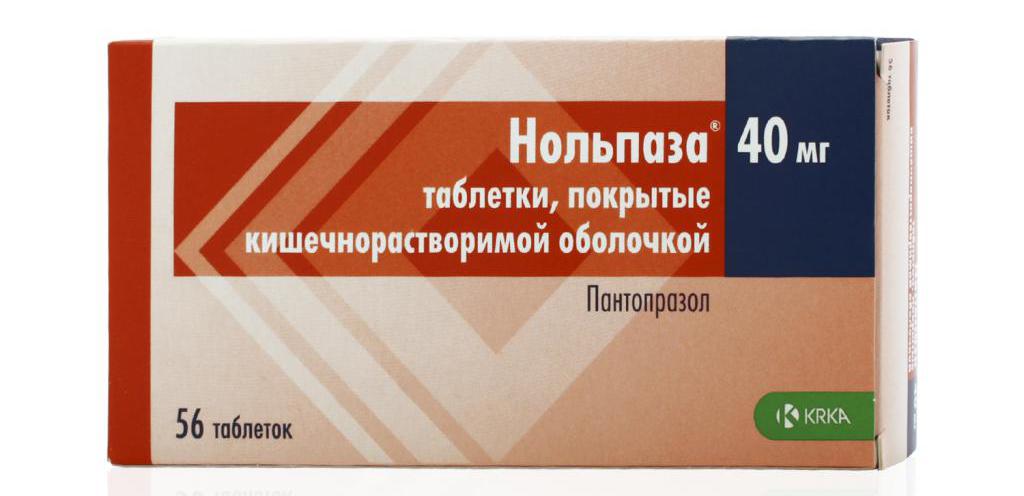
Nolpaza is a second generation drug, pantoprazole. Its tablet contains 22 mg, and it acts on the same enzyme – hydrogen-potassium ATPase. Pantoprazole is also rapidly absorbed, and food intake does not affect the quality of treatment. Just like omeprazole, it is transformed in the liver and excreted through the kidneys. Unlike omeprazole, it can be used in patients with chronic renal failure, and even in those who are on hemodialysis. Pantoprazole can also be used in patients with liver cirrhosis, which is uncommon.
The drug comes in intestinal dissolving tablets and is used in eradication regimens in combination with two antibiotics. Just like omeprazole, contraindications include pregnancy, lactation and children under 18 years of age, due to the small amount of accumulated data.
The most common adverse reactions are diarrhea and headache, which develops no more than 1% of patients. Other side effects include sleep disturbance, bloating and dry mouth, flatulence and constipation, and elevated liver transaminases. A skin rash may occur. In the event that Nolpazu or other analogs of pantoprazole are received by a patient with HIV infection, against the background of atazanavir, then this treatment must be corrected. For the eradication scheme, the drug is used in the same way as Omeprazole, one 40 mg tablet 2 times a day, the course of treatment is also from 1 to 2 weeks.
Nolpazu is produced by Krka. One package of the drug, designed for two weeks of treatment according to eradication schemes, that is, 28 tablets of 40 mg each, can be purchased in pharmacies from 370 to 430 rubles. The Indian drug Panum, which is produced by Unic, can be purchased even cheaper – at a price of 230 to 417 rubles. at the same dose.
Lansoprazole (Helikol, Ranzap, Lanzoptol, Lancid, Epicur)
Popularity rating: 4.7
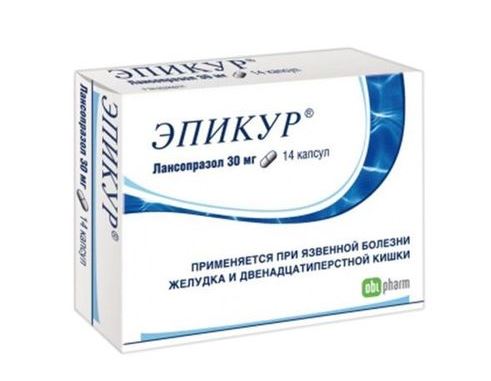
Third-generation proton pump inhibitors such as Epicurus and Lancid also work with sodium potassium ATPase in the last stage of hydrochloric acid formation. As a result, both general, basal and stimulated secretion of gastric juice decreases. As in the case of omeprazole, the effect develops gradually, and reaches a maximum on the 4th day of administration. The drug also binds to plasma proteins by 98%, when passing through the liver, it is transformed and excreted by the kidneys.
Just as in the previous case, the agent is used for eradication therapy. Do not use for children, pregnant women, nursing mothers, as well as people with manifestations of hepatic or renal insufficiency. Therefore, in the case of such a pathology, Nolpaza will be more profitable. Side effects include headache, dizziness, drowsiness, diarrhea, allergic skin reactions, and rhinitis and pharyngitis.
A feature of lansoprazole is the need to use the drug in the morning on an empty stomach. In case of eradication, it is necessary to take the medication 30 mg twice a day for up to 2 weeks, in accordance with the recommendations of the gastroenterologist.
The cost of the domestic drug Epicur, just in this dosage, in the amount of 14 pieces, that is, for one week of eradication, ranges from 370 to 580 rubles. Accordingly, two such packages are required to carry out a complete scheme. That is, you need to focus on somewhere around 1000 rubles. The Indian drug Lancid will cost significantly less. One package of Indian lansoprazole is in a dosage of 30 mg # 30, that is, it is enough for a full two-week eradication regimen. Moreover, its cost ranges from 330 to 415 rubles. As a result, the drug will cost half the price.
Rabeprazole (Bereta, Pariet, Zulbeks, Rabelok, Razo, Ulcernil, Khairabezol)
Popularity rating: 4.6
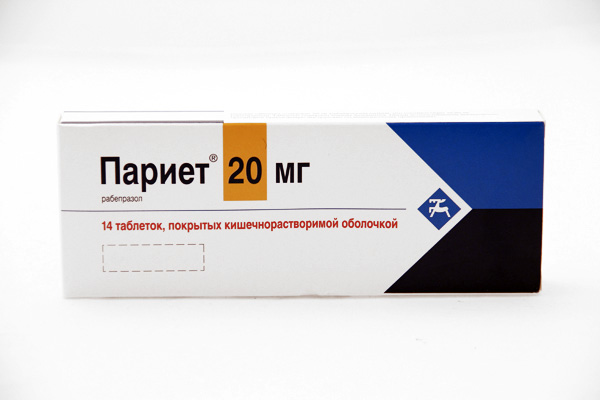
Generation 4 proton pump inhibitors or blockers are known to be perhaps the most expensive of this PPI group. This is Pariet, the original rabeprazole. It is used, of course, not only for the treatment of H. pylori infection, but also for peptic ulcer in the acute stage, with erosive gastritis, with Zollinger-Ellison syndrome, and in other cases. It is very good at relieving heartburn and pain and is considered by many to be the most effective and safest of all PPIs.
It is used with an eradication scheme of 20 mg 2 times a day, according to the scheme prescribed by a gastroenterologist, and always with the appointment of appropriate antibiotics, which will be discussed below. It is important that the eradication scheme using Pariet is shorter than in other cases and is only 7 days, but this still makes it the most expensive. How much will it cost to eradicate H. pylori infection using Pariet?
A standard package containing tablets of the required concentration in an amount of 14 pieces for this scheme will cost from 1950 to 2400 rubles. Этот препарат выпускается компанией Бушу Фармасьютикалз, и может производиться в Японии, Швейцарии, Бельгии под патронажем компании Janssen Cilag, то есть Johnson &Johnson, Россия. Such international cooperation is not uncommon in the pharmaceutical industry.
Pariet is used in tablets as a whole, at any time of the day and regardless of food intake, which is very convenient. As in previous cases, the drug is contraindicated in pregnancy and breastfeeding, also in childhood, with hypersensitivity to the active ingredient rabeprazole, and with caution in severe renal failure. Side effects on Pariet are mild, transient, and Pariet is usually very well tolerated without any disturbances in the vital functions of the body. In the same case, if such effects occur, then not more often than in one case per 1000 people taking Pariet. This is really very good tolerance, the drug justifies its price. If there were any violations, then it was a headache, stool disorders, dry mouth and constipation. Of course, if the health costs are considered excessive, then a cheaper rabeprazole can be selected. So, a medicine called Razo, produced in India, will cost only from 320 to 450 rubles, while the pack will contain not 14 tablets, but thirty.
Esomeprazole (Nexium, Emanera)
Popularity rating: 4.5
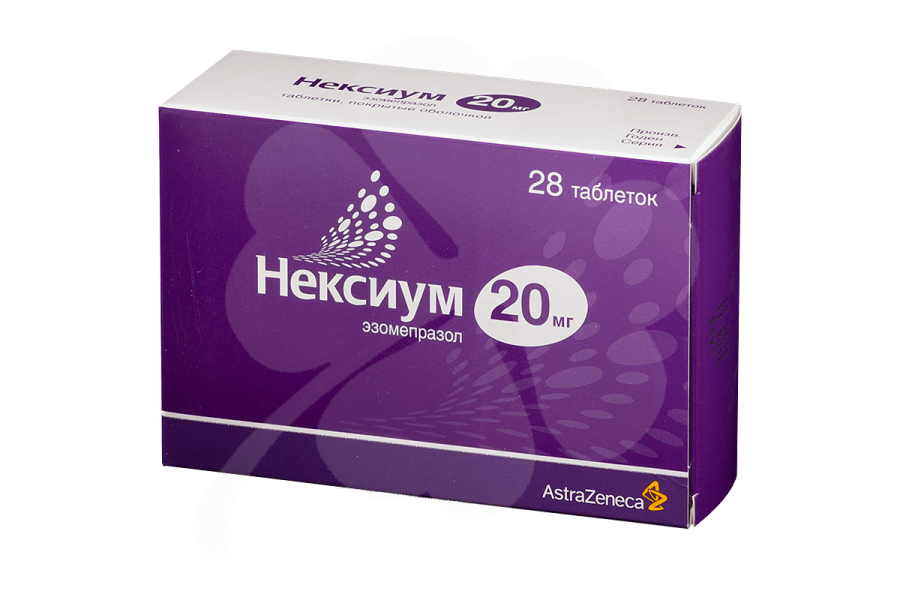
Nexium is the fifth generation of proton pump inhibitors, or esomeprazole. It is used in the same way as in previous cases for eradication regimens, at a dose of 20 mg 2 times a day for 1 week. A package of this drug, designed for two eradication schemes (that is, 28 tablets per pack) will cost from 214 to 250 rubles, the drug is produced by Astrazeneca in Sweden. There are other analogs, for example Emanera from Slovenia, which is approximately in the same price range.
The drug acts quickly and for a long time. With daily intake, the maximum development of the effect is observed on the fifth day, it has been proven that even after stimulation with pentagastrin, the acidity of gastric juice decreases by 90%. The effectiveness of this drug is well shown by its appointment for peptic ulcer disease. After the eradication course, no more drugs (enveloping) are required for the subsequent healing of the ulcer, usually Nexium does a good job on its own.
Also, this remedy is effective for peptic bleeding. This medicine is indicated for long-term use of NSAIDs, it significantly reduces the risk of stomach ulcers. Contraindications and side effects of this drug are about the same as those of previous drugs, and the most common side effects were headache and abdominal discomfort.
Antibacterial agents
We turn to the second component of eradication therapy regimens, which is no less important than proton pump inhibitors. A decrease in gastric secretion allows you to 'knock out from under feet' the soil of Helicobacter pylori, drastically changing its living conditions, creating discomfort for it. As for antibacterial drugs, it is they that directly destructively affect various life forms of Helicobacter. There are a limited number of antibacterial agents from various groups that have been successfully tested by the international gastroenterological community for the treatment of Helicobacter pylori infection. These are antibiotics clarithromycin and amoxicillin, metronidazole, an ancient but rather effective antibiotic tetracycline, which also found its use, as well as a drug from the group of fluoroquinolones – levofloxacin. Let us briefly consider these drugs for modern eradication regimens and protocols.
Clarithromycin (Klacid, Klabaks, Klabakt, Ecositrin)
Popularity rating: 4.9

Clarithromycin is a macrolide antibiotic. The range of its application is extremely wide, we will not list its effectiveness against certain microorganisms, we will only point out that Helicobacter pylori is highly sensitive to clarithromycin. However, at present, its sensitivity is gradually decreasing, and treatment with clarithromycin should be carried out taking into account the patient's area of residence. There are regions in which Helicobacter pylori infection with high clarithromycin resistance occurs predominantly, and then other regimens should be used from the very beginning. And there are regions in which, according to epidemiological data, Helicobacter pylori is sensitive to Clarithromycin. In the case of high sensitivity, almost 85-90% of patients will be successfully cured.
Clarithromycin is administered twice a day for a week. The usual dosage is 500 mg. One of the most effective and highly purified preparations is Italian Clacid. The drug is contraindicated for use in conjunction with ergot alkaloids for the treatment of migraines, in pregnant and lactating women, children under 3 years of age. Caution should be exercised in patients with severe liver dysfunction. Klacid, packaged in the amount of 14 tablets of 500 mg each, just for the eradication therapy scheme, will cost from 650 to 850 rubles, a similar domestic drug Ecositrin, manufactured by ABBA-Rus, will cost from 370 to 420 rubles.
Perhaps the cheapest can be considered Clarithrosin, the domestic company Sintez, but there is a catch. A pack of 10 tablets will cost from 230 to 300 rubles, but then you have to buy another pack to find the missing four tablets to complete the two days of the scheme. As a result, you will spend about the same amount of money as in the case of a quality Italian Clacid.
Amoxicillin
Popularity rating: 4.8

Amoxicillin is a semi-synthetic penicillin that is very quickly absorbed into the bloodstream and excreted by the kidneys. Amoxicillin in eradication therapy regimens is prescribed in high dosages: 1000 mg, that is, 1 g twice a day. Treatment lasts a week, that is, the course will require 14 g of amoxicillin.
Perhaps the best choice can be considered the drug Flemoxin Solutab, which is produced just in a dosage of 1000 mg in soluble dispersible tablets, in a package of these tablets there are 20 pieces, that is, 6 pieces will still remain. The cost of this drug is from 370 to 450 rubles, in excellent European quality. It is produced by Astellas, the Netherlands. The second option is Amoxicillin Sandoz, which is produced in Austria. Its quality is no worse, and its cost is much lower, from 150 to 175 rubles. The dosage is the same. The only drawback is that there are 12 tablets in the package, that is, you have to look for two more additional tablets, or buy again, as in the case of Clarithrosin, a new package, so it is better to opt for Flemoxin.
Flemoxin is contraindicated in case of sensitivity to semisynthetic penicillins, with great care it should be prescribed to patients who have been diagnosed with lymphocytic leukemia and the presence of chronic renal failure. The remedy can be used during pregnancy and breastfeeding, but other drugs included in the eradication regimens cannot be used during pregnancy. Therefore, it is better to be treated for Helicobacter pylori infection for women in a different period of life. Also, the drug can cause side effects, but it is usually well tolerated. Eating does not affect treatment, one tablet is dissolved in a glass of water and taken twice a day.
Tetracycline
Popularity rating: 4.7

Good old inexpensive tetracycline is a broad-spectrum antibiotic, and although rarely, it is used in special eradication schemes. It is contraindicated in the case of renal failure, with a significant decrease in the number of leukocytes, during pregnancy and breastfeeding, it is prescribed with caution in case of severe liver dysfunction.
Tetracycline, which, perhaps, is all produced by almost all in the Russian Federation, cannot be adapted and packaged conveniently for eradication schemes. It should be used at a high dosage, 500 mg 4 times a day, that is, 2 g daily for 10 days. Thus, the total amount of tetracycline per course will be 20 g. It is produced in tablets of 100 mg, in a package of 20 tablets. Therefore, the course of treatment requires 10 packs of the drug, and daily you need to swallow 20 tablets, and take it often. In the morning and at lunchtime, in the evening and at night – each time, five tablets. Perhaps this is the most inconvenient drug option that can be found in the eradication scheme. Considering that it is produced either in Belarus or by the Tyumen Chemical Pharmaceutical Plant, there is no need to talk about European quality.
Metronidazole
Popularity rating: 4.6
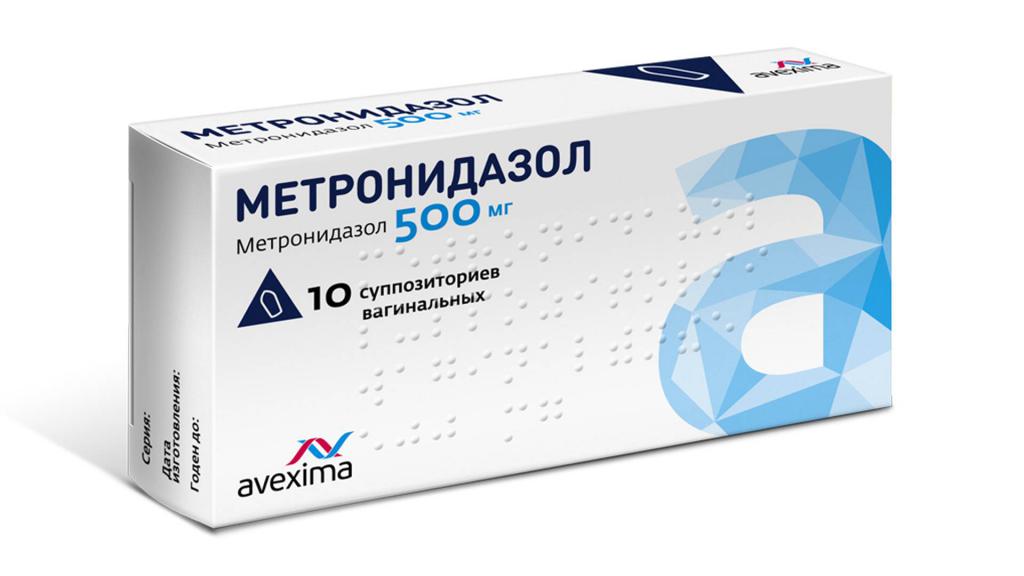
Metronidazole for the eradication of H. pylori infection is widely used in the same way as Clarithromycin, 500 mg 2 times a day for a week. Strictly speaking, it is not an antibiotic and affects microorganisms with its nitro group, which contains nitrogen. So, metronidazole is produced by the Takeda company, and it is very cheap, one pack of 20 tablets is enough for the course of eradication, and it will cost no more than 80 rubles.
Special care should be taken while taking metronidazole. During treatment with metronidazole, it is strictly forbidden to consume alcohol, as it can cause an antabuse-like (or teturam-like) reaction. It is associated with incomplete oxidation of alcohol and the accumulation of acetaldehyde in the blood. This leads to shortness of breath, redness of the face, toxic effects on the liver when combined with alcohol during treatment with metronidazole.
It is contraindicated for use in case of leukopenia, epilepsy and liver failure, in the first trimester of pregnancy, and breastfeeding. While taking metronidazole, there may be a metallic taste and dry mouth, diarrhea, dizziness, joint pain. In the event that the eradication scheme together involves taking amoxicillin and metronidazole, then the patient's age must be over 18 years old. While taking metronidazole, urine may turn reddish or brown, this is a temporary phenomenon and should not be scared.
Levofloxacin (Glevo, Remedia, Tavanic)
Popularity rating: 4.5
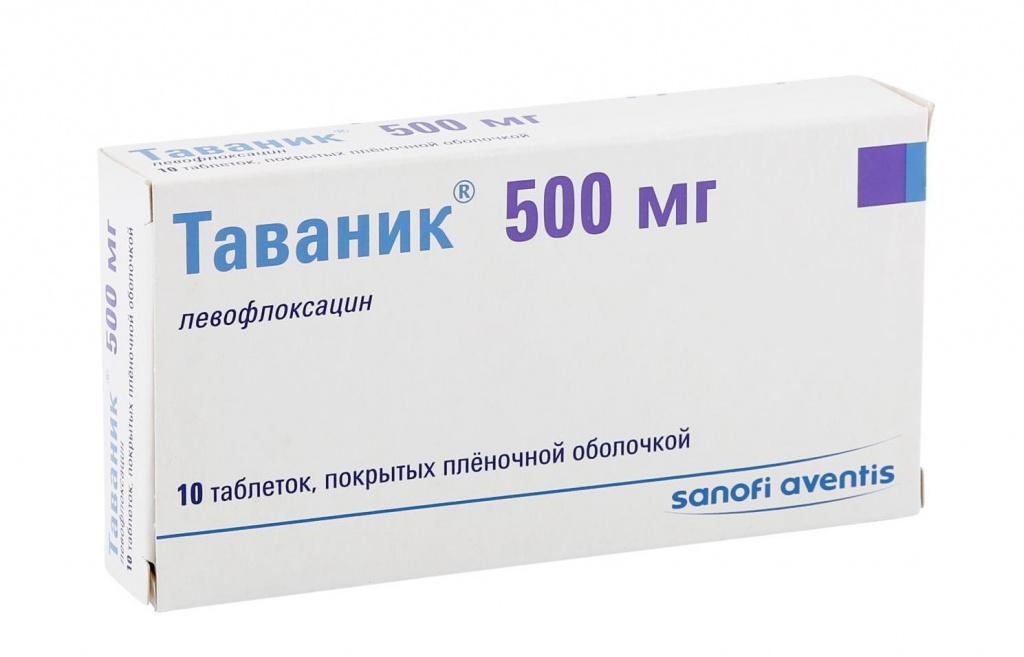
Finally, fluoroquinolone levofloxacin is used in eradication regimens, one of the best representatives is the drug Tavanic. It is a broad-spectrum antibacterial agent that disrupts the DNA synthesis of microorganisms. Levofloxacin is effective, especially in clarithromycin-resistant infection. Levofloxacin is prescribed 500 mg 2 times a day, also for a week or 10 days, according to the decision of the gastroenterologist.
A package of Tavanica, designed for 5 days (10 tablets) in the eradication scheme, will cost from 670 to 900 rubles, and a full treatment will cost 1500-2000 rubles. Tavanik is produced by Sanofi from France. The cheapest analogue can be Glevo of the Indian company Genmark. One such package of 25 500 mg tablets, which is enough for the scheme, will cost no more than 210 rubles.
When prescribing Tavanik and Glevo, contraindications such as myasthenia gravis, epilepsy, age up to 18 years and intolerance to fluoroquinolones, pregnancy and the period of breastfeeding should be taken into account. Very great care is needed if there is a predisposition to seizures, impaired renal function.
Combined medicines: three in one
Pilobact
Popularity rating: 4.9

Popularity rating: 4.8
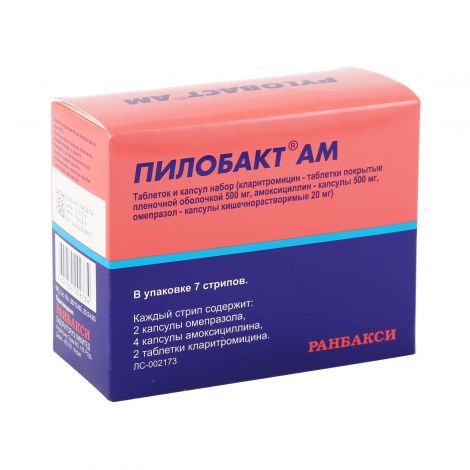
For the sake of fairness, a combined drug called Pilobact must be called. It was created by enterprising Indians, the company San Pharmaceutical. It immediately contains clarithromycin, omeprazole and tinidazole. There is also Pilobact-AM (clarithromycin, omeprazole and amoxicillin). Thus, a ready-made eradication scheme in 'one bottle'. It is necessary to use this drug within 7 days, the product consists of tablets and capsules. Capsules and tablets are marked with the words 'morning' and 'evening' in a separate color, red and blue.
Such a drug costs about 1100 rubles. for a package of tablets and capsules, just calculated for the course of therapy. However, all three substances will be of Indian quality, although they are not bad. But if a person can spend as much on his treatment as needed, then of course, the gastroenterologist will prescribe separately high-quality antibiotics and proton pump blockers.
Bismuth preparations
Finally, the last group of drugs that are used for eradication are bismuth compounds. Bismuth is an element of the periodic table, a metal that exhibits a number of amazing non-metallic properties. In the acidic conditions of the stomach, products containing bismuth cover it with a protective film. Under this film, an ulcer is well scarred, if any, and the mucous membrane is protected from harmful factors. Under the layer of bismuth, the amount of mucus increases, and the production of pepsin decreases. Bismuth itself has antimicrobial activity deep inside the mucus layer, where drugs from the blood can get poorly. It is important that bismuth preparations, if used in isolation, inhibit the activity of the microbe, but at the same time do not change the properties of gastric juice, and do not affect digestion. However, taking bismuth preparations can stain the stool black.
These drugs are in reserve. They are prescribed if the H. pylori infection is highly resistant to clarithromycin. Bismuth can destroy its various forms, both coccal and vegetative. We will not list a large number of bismuth preparations, I will only say that they are used:
bismuth subnitrate or Bismofalk;
complex cheap 'ancient' drugs Vikalin and Vikair, which are produced in Russia. These are cheap medicines, a package of 20 tablets does not exceed the cost of 170 rubles, but they are usually rough and poorly tolerated by many;
De-nol
Popularity rating: 4.9
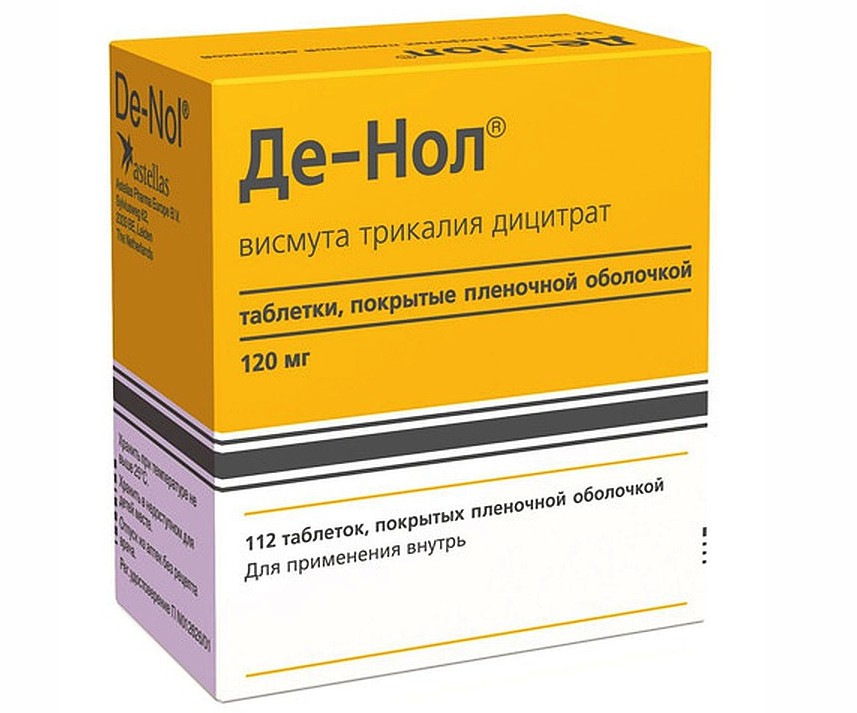
Colloidal bismuth subcitrate in combination with potassium is considered a classic preparation of bismuth. It is sold under the well-known trade mark De-nol, it is produced in Russia under the control of the Astellas company. Also, this drug is known as Escape.
For adults, De-nol is prescribed before meals, one tablet four times a day, and at night. Other schemes are also possible. The drugs should not be taken for more than 2 months, but eradication lasts much shorter. The cost of the drug depends on the dosage, but the average price of a pack of 32 120 mg tablets does not usually exceed 300 rubles;
in international recommendations, you can also find bismuth subsalicylate, a metal compound with salicylic acid. This compound has a pronounced activity against Helicobacter pylori, but it is rarely used in the Russian Federation.
The term for taking bismuth compounds in eradication schemes is determined by the doctor. Bismuth should not be taken during pregnancy and during breastfeeding, and should not be used for too long, as it accumulates in the central nervous system with the gradual development of symptoms of encephalopathy.
How to treat Helicobacter correctly?
Now you know what drugs you need to 'etch out' Helicobacter pylori infection from the body. It remains to choose a therapy regimen. If it is known that in a given region of the country the level of microbial resistance to clarithromycin is more than 15%, then alternative eradication schemes have to be used. There are microbes and resistance to metronidazole, and sometimes double resistance. But this, of course, is the complexity and subtleties, the concern of the doctor.
So, there are several lines of treatment, and the first one is universal. This line includes one of the proton pump blockers, clarithromycin, amoxicillin, or metronidazole. The standard duration of treatment is a week, but if it is increased to 2 weeks, then its effectiveness increases.
The next line also includes a proton pump inhibitor, metronidazole and tetracycline, but then bismuth is added at a dose of 120 mg 4 times a day. This four-part circuit (quad circuit) lasts 10 days. As mentioned above, bismuth salts are prescribed if the resistance of Helicobacter pylori infection is quite high, which is why clarithromycin is not included here.
Here is an alternative protocol called sequential therapy. At the beginning, the patient takes a proton pump inhibitor for 5 days, for example, omeprazole and amoxicillin, and then the first regimen continues for 5 days: omeprazole is continued, and clarithromycin and metronidazole are added, and amoxicillin is discontinued. If the region of residence is characterized by a high degree of clarithromycin resistance, then levofloxacin is added to the eradication scheme instead.
Gastroenterologists and epidemiologists continued to puzzle over how to eradicate such a small but so persistent H. pylori. Then the so-called concomitant therapy was developed, and then the combination of two types: sequential and concomitant. In the first case, the patient is given a proton pump inhibitor, clarithromycin, amoxicillin, and metronidazole for 10 days.
In the case of combining sequential and concomitant therapy, the patient takes a proton pump inhibitor and amoxicillin for a week, and then metronidazole and clarithromycin are added with certain subtleties. This is a fairly highly effective tactic, up to 99% cure, and at the same time, Helicobacter strains, even with double resistance, were destroyed.
How to strengthen the treatment regimen?
Continuing to fight Helicobacter pylori infection, other drugs are also used. There are schemes using the antibiotic rifabutin (2500 rubles) and furazolidone. Two-component therapy in high doses is used, and other schemes.
In addition to bismuth preparations, it is indicated in difficult cases of the use of the gastroprotective agent rebapimide (Rebagita). Its inclusion in eradication regimens makes it possible to increase the effectiveness of treatment by 12%. The addition of probiotics, bifidobacteria and lactobacilli also increases the effectiveness of treatment.
It is very important to use only internationally accepted treatment protocols, internationally approved dosages, and it is also important to use only original drugs. Of course, generics seem to be effective, but the range of this effectiveness is very large – from worthy to complete falsification. Unfortunately, we are not talking about the simultaneous pharmaceutical, therapeutic and biological equivalence with the original drug. Only 'bioequivalence' is compared. Therefore, in the event that the patient does not have the opportunity to purchase really working drugs, and is forced to limit himself to only the cheapest generics, then in the end the H. pylori infection will not be destroyed. The microorganism, after all, in this patient will have already been trained to withstand weak and low-quality drugs, acquiring additional resistance.
In conclusion, it should be warned that, despite full treatment, you can get infected with Helicobacter pylori infection again. Unfortunately, a real vaccine against H. pylori has not yet been invented. And existing and widely advertised nutritional supplements in the form of Helinorm, which contains 'special lactobacilli', have no proven effectiveness. Helinorm is produced under the patronage of Nizhpharm, but is a common food supplement. However, this does not prevent the manufacturer from asking from 1400 to 1900 rubles for a package of 28 capsules. This drug is not included in any eradication scheme, and its name is practically not found in modern reviews devoted to the treatment of this infection.
The popularity rating is based on the analysis of demand data from the wordstat.yandex.ru service.
Attention! This rating is subjective and does not constitute an advertisement and does not serve as a purchase guide. Before buying, you need to consult with a specialist.

